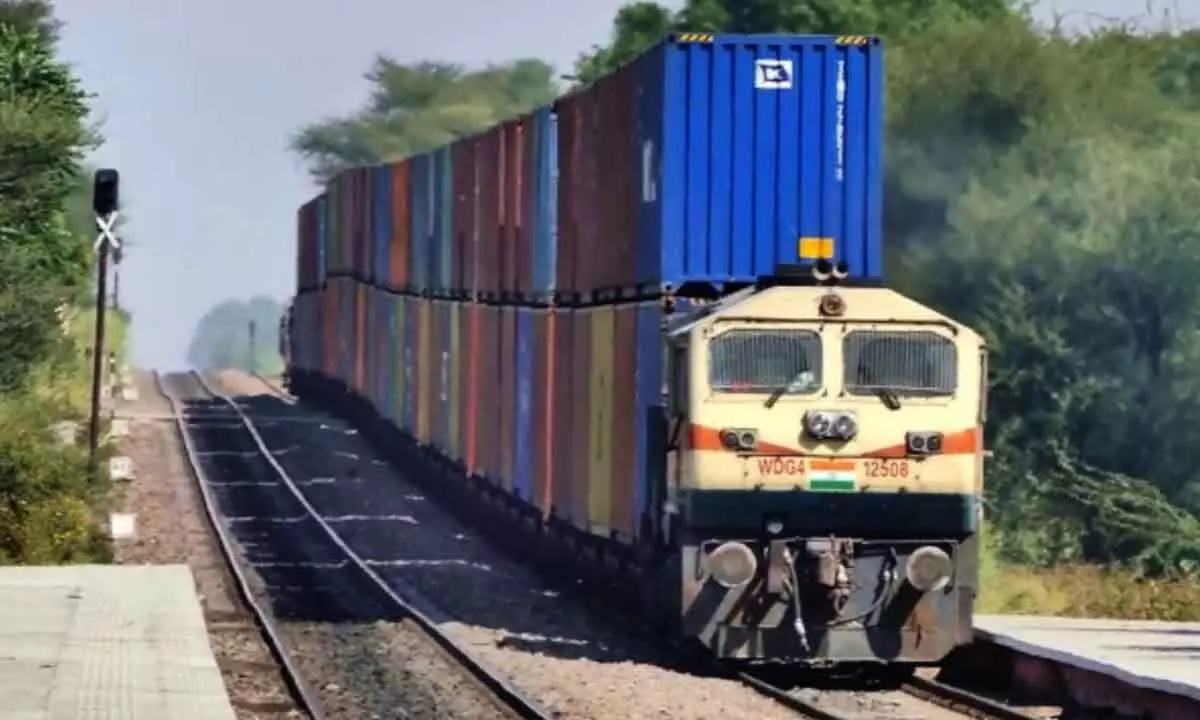2 New Railway freight corridors will fuel GDP growth
Eastern Dedicated Freight Corridor and Western Dedicated Freight Corridor, which is nearing completion, are potential game-changers for the Indian economy
image for illustrative purpose

Dedicated Freight Corridors
- 140 trains running on several sections of EDFC
- The track network has capacity accommodate up to 250 trains every day
- The travel time cut from 50 hours to 20 hours
New Delhi: The Eastern Dedicated Freight Corridor, which has just been completed, and the Western Dedicated Freight Corridor, which is nearing completion, are potential game-changers for the Indian economy.
The corridors are expected to enable the Indian Railways to speed up the movement of long-distance goods traffic and decongest the railway tracks for passenger movement.
At the same time the two corridors will decongest the highways on the busy Delhi-Howrah and Delhi-Mumbai routes as more goods traffic moves from road to rail.
The construction of the two projects which took off with the NarendraModi government coming to power in 2014 has seen a massive investment of around Rs1.24 lakh crore to modernise the country’s infrastructure and spur growth.
The EDFC, which stretches across 1,337 km from Ludhiana in Punjab to Sonnagar in Bihar, while covering the coal belt of Jharkhand and West Bengal, has been fully completed and was opened to commercial traffic on Nov 1.
As much as 1,176 km of the 1,506 km WDFC linking Jawaharlal Nehru Port in Navi Mumbai to Dadri on the outskirts of Delhi has also been constructed and the remaining portion is expected to be completed soon.
Dedicated freight corridors offer an average speed of 50-60 kmph, which is almost thrice that of regular railway tracks on which goods trains have to stop or slow down to let passenger trains pass.
Currently, 140 trains are running on several sections of the EDFC and the track network has the capacity accommodate up to 250 trains every day. The travel time has been cut from Sonanagar to Delhi from 35-50 hours to 18-20 hours with the completion of EDFC.
The DFCs will enable India to cut its high logistics costs from some 13-15 per cent of the GDP to the target of 8 per cent which is more in line with global standards. In addition, each kilometre-long freight train on the EDFC will replace some 72 trucks on average. This will ease congestion on India’s overcrowded roads and highways, which carry an overwhelming 60 per cent of the country’s freight.
The Eastern Corridor connects the coal fields of Jharkhand and West Bengal, such as Eastern Coalfields Ltd, Central Coalfields Ltd, Bharat Coking Coal Ltd and Northern Coalfields Ltd, to power plants in Northern India.
With freight trains touching maximum speeds of up to 100 km/h on this corridor, the rapid supply of coal to power plants has led to a drastic cut in transportation time and reduced logistics costs.
The quick transportation leads to an enhanced efficiency in the power sector, which had to often see large blackouts due to coal stocks not reaching in time. The movement of other essential goods, including iron and steel, has also become quicker. The commissioning of this segment has not only eased the pressure on the Delhi-Howrah main line but has also facilitated the swift and smooth operation of trains on the freight corridor. This has enabled the introduction of additional passenger train services on the Delhi-Howrah main line.

